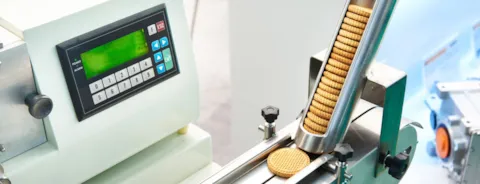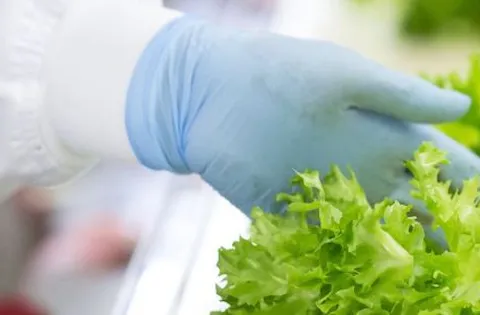Hazard Analysis Critical Control Point (HACCP) Principles
According to the World Health Organization, an estimated 600 million – almost 1 in 10 people in the world – fall ill after eating contaminated food and 420 000 die every year, resulting in the loss of 33 million healthy life years. To address this the food industry, standards organizations and regulatory bodies have applied the Hazard Analysis Critical Control Point Principles (HACCP) aimed at improving food safety.
What is HACCP?
Originating in the 1960s US space exploration program, HACCP was initially defined by NASA and the US food company Pilsbury and consequently developed by the FAO and WHO Joint Commission on Food Safety (called "Codex Alimentarius"). The Hazard Analysis Critical Control Point (HACCP) is a systematic preventive approach to food safety that addresses physical, chemical, and biological hazards as a means of prevention rather than using quality control finished product inspections.
This method, based on 7 principles, has significant importance in the food industry as it provides a framework for identifying and controlling significant hazards, ensuring the safety of food products. The success of the HACCP methodology in the food industry has led to it being applied in the pharmaceutical and cosmetic manufacturing sectors.
What are the 7 principles of HACCP?
Here are the seven 7 principles of HACCP explained:
- Conduct a hazard analysis: Identify potential hazards that could occur in the food production process, assess their significance and determine control measures.
- Determine the Critical Control Points (CCPs): Points in the process where the identified significant hazards can be effectively controlled or eliminated.
- Establish critical limits: Set maximum or minimum values to which relevant process parameters must be controlled at a CCP to prevent, eliminate, or reduce to an acceptable level the occurrence of a food safety hazard.
- Establish monitoring procedures: Design and implement procedures to ensure that the critical limits at each CCP are adhered to.
- Establish corrective actions: Identify actions to be taken when monitoring indicates that a particular CCP is not under control.
- Establish verification procedures: Apply methods, procedures, tests, and other evaluations, in addition to monitoring, to determine compliance with the HACCP plan.
- Establish record-keeping and documentation procedures: Keep records for verification and documentation of all procedures and their effectiveness.
Why is the HACCP important?
There have been laws around the safety of food throughout history and these have become more necessary as food production has become industrialized. Increased complexity and globalization of the food supply chain has increased the risk of incidents, but these can be prevented using appropriate methodologies.
Nevertheless, the figures mentioned in the introduction have societal and economic consequences and ensuring food safety is seen as a core aspect of a company’s ESG (Environmental, Social, Governance) and sustainability commitments. The UN holds the view that food safety is critical to food security (reliable access) and public health. Therefore relevant to a number of SDGs. Even with massive investment towards such SDGs, progress can be hampered without a good food safety control system. The importance of the HACCP lies in its ability to systematically identify and prevent possible food safety hazards, which can lead to foodborne illnesses.
By implementing HACCP guidelines, food businesses can ensure compliance with regulatory requirements and demonstrate their commitment to producing safe food, thereby protecting public health and enhancing customer confidence. Furthermore, producers can also benefit by reducing the cost of product recalls or lost sales due to contaminated products.
7 Principles of HACCP: examples
Food production and distribution is a large and vital sector in today’s world. Societal expectations and regulatory demands around food safety can best be met by applying HACCP as the base. It can provide relevant inputs to other elements of the food safety system, including for example:
Training and Awareness: Ensuring that all staff involved in food handling and preparation are trained in proper food safety practices to minimize the risk of contamination.
Design and Layout of Food Establishments: Establishments should be designed to permit adequate maintenance, cleaning, and separation of areas with different levels of hygiene control to minimize cross-contamination.
Control of Refrigerants and Toxic Substances: As technology advances, safety classifications help define procedures for proper handling and installation of refrigerants and other substances that could pose a threat to food safety if not managed correctly.
Digitalization and Monitoring: Utilizing digital technologies such as sensors and beacons to monitor food safety risks in real-time, allowing for immediate action to prevent contamination.
Food Safety Management Systems: Implementing food safety management systems like ISO 22000 to incorporate food safety into the design phase of products and to manage operational risks such as contamination.
Special Conditions and Standards: Adhering to special conditions and standards set by food safety certification bodies to ensure compliance with the latest food safety requirements.
These applications demonstrate the importance of a proactive approach to managing food safety hazards and ensuring the safety of food products from production to consumption.
Businesses within the food industry come in all shapes and sizes but all need to understand that applying HACCP can improve economic results and being able to demonstrate a commitment to food safety could lead to increased business opportunities. Demonstrating commitment is easiest by becoming certified to one or more of the recognized food safety standards. DNV is able to provide the training needed to aid in implementing a standard and as an approved certifying body can help in obtaining and maintaining certification. Learn more about DNV Food Safety Online Courses.


